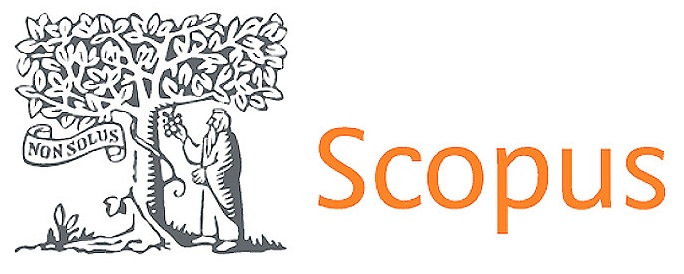Optimized design of digital animation based on virtual reality technology
DOI:
https://doi.org/10.56294/sctconf20251285Keywords:
Digital Animation, Virtual Reality (VR), Upgraded Penguin Search Optimization (UPSO), Computer-generated Imagery (CGI)Abstract
Background: The production of moving images using computer systems is referred to as digital animation, or laptop-generated imagery (LGI). By using virtual landscapes and devices to create immersive settings, virtual reality (VR) improves this experience. The application of virtual reality (VR) technology and optimization algorithms to digital animation character technology is investigated in this study.Aim: The study aims to enhance the shape, motion, and interplay of animated characters using an upgraded Penguin Search Optimization (UPSO) algorithm, while also employing VR for motion design and scene communication.Methods: The research employs motion captures facts, scenario descriptions, and the character models to optimize the shape, actions, and interactions of animation characters. To improve those components, the UPSO set of rules is applied, and the efficiency of the optimized animation in realistic virtual worlds is accessed via VR generation.Results: The adoption of the UPSO algorithm resulted in a significant improvement in the realism of character actions (95%), character quality (92%), and overall product satisfaction (93%). The UPSO algorithm also achieved an accuracy of 97.03%.Conclusion: This study contributes to the advancement of animation by combining optimization algorithms with VR technology, resulting in a more immersive and appealing visual experience for users
References
[1] Wang Y, Zhang N, Chen D, Vongphantuset J. Animation design using virtual reality modeling and fractal morphing technology. Fractals. 2022 Mar 26;30(02):2240100. DOI: https://doi.org/10.1142/S0218348X22401004
[2] Asish SM, Kulshreshth AK, Borst CW. Detecting distracted students in educational VR environments using machine learning on eye gaze data. Computers & Graphics. 2022 Dec 1;109:75-87. DOI: https://doi.org/10.1016/j.cag.2022.10.007
[3] Huang L, Xu H. Digital Media Art Creation and Expression Modelling Based on Virtual Reality Technology. Journal of Electrical Systems. 2024;20(7s):3105-17.
[4] Moon J, Ke F, Sokolikj Z, Chakraborty S. Applying multimodal data fusion to track autistic adolescents’ representational flexibility development during virtual reality-based training. Computers & Education: X Reality. 2024 Jan 1;4:100063. DOI: https://doi.org/10.1016/j.cexr.2024.100063
[5] Liu, X. and Pan, H., 2022. The path of film and television animation creation using virtual reality technology under the artificial intelligence. Scientific Programming, 2022(1), p.1712929. DOI: https://doi.org/10.1155/2022/1712929
[6] Bao Y. Application of virtual reality technology in film and television animation based on artificial intelligence background. Scientific Programming. 2022;2022(1):2604408. DOI: https://doi.org/10.1155/2022/2604408
[7] Qian J. Research on artificial intelligence technology of virtual reality teaching method in digital media art creation. Journal of Internet Technology. 2022 Jan 1;23(1):125-32. DOI: https://doi.org/10.53106/160792642022012301013
[8] Gong Y. Application of virtual reality teaching method and artificial intelligence technology in digital media art creation. Ecological Informatics. 2021 Jul 1;63:101304. DOI: https://doi.org/10.1016/j.ecoinf.2021.101304
[9] Zhao J, Zhao X. Computer-aided graphic design for virtual reality-oriented 3D animation scenes. Computer-Aided Design and Applications. 2022;19(1):65-76. DOI: https://doi.org/10.14733/cadaps.2022.S5.65-76
[10] Gan B, Zhang C, Chen Y, Chen YC. Research on role modeling and behavior control of virtual reality animation interactive system in Internet of Things. Journal of Real-Time Image Processing. 2021 Aug;18(4):1069-83. DOI: https://doi.org/10.1007/s11554-020-01046-y
[11] Paier W, Hilsmann A, Eisert P. Example-based facial animation of virtual reality avatars using auto-regressive neural networks. IEEE Computer Graphics and Applications. 2021 Mar 23;41(4):52-63. DOI: https://doi.org/10.1109/MCG.2021.3068035
[12] Chen W, Liu X, Qiao L, Wang J, Zhao Y. Construction of Virtual Reality‐Interactive Classroom Based on Deep Learning Algorithm. Wireless Communications and Mobile Computing. 2020;2020(1):8870536. DOI: https://doi.org/10.1155/2020/8870536
[13] Kumar A. Gamification in training with next generation AI-virtual reality, animation design and immersive technology. Journal of Experimental & Theoretical Artificial Intelligence. 2024 Oct 2;36(7):1121-34. DOI: https://doi.org/10.1080/0952813X.2022.2125080
[14] Shan F, Wang Y. Animation design based on 3D visual communication technology. Scientific Programming. 2022;2022(1):6461538. DOI: https://doi.org/10.1155/2022/6461538
[15] Wang CY, Zhou Q, Fitzmaurice G, Anderson F. VideoPoseVR: Authoring virtual reality character animations with online videos. Proceedings of the ACM on Human-Computer Interaction. 2022 Nov 14;6(ISS):448-67. DOI: https://doi.org/10.1145/3567728
[16] Li L, Li T. Animation of virtual medical system under the background of virtual reality technology. Computational Intelligence. 2022 Feb;38(1):88-105. DOI: https://doi.org/10.1111/coin.12446
[17] Guo Z, Li T. Practical Analysis of Virtual Reality 3D Modeling Technology for Animation Majors Based on Predictive Correction Method. Informatica. 2024 Sep 6;48(13). DOI: https://doi.org/10.31449/inf.v48i13.6129
Downloads
Published
Issue
Section
License
Copyright (c) 2025 Chen Guo , Surendheran Kaliyaperuma (Author)

This work is licensed under a Creative Commons Attribution 4.0 International License.
The article is distributed under the Creative Commons Attribution 4.0 License. Unless otherwise stated, associated published material is distributed under the same licence.



